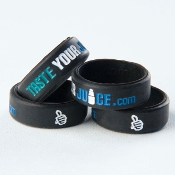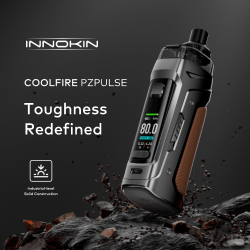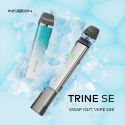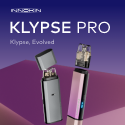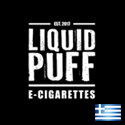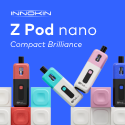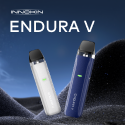Author: John Muchow
A BATTERY MOOCH POST: When choosing a battery for a regulated device, coil resistance doesn’t matter.
Only the power setting you use determines how much current is drawn from the battery (up to the voltage/current limits of the device).
The battery isn’t connected to the coil, the regulator circuit board is. So if you’re using a device in variable-wattage (VW) mode then the battery will always just have to feed enough current to the regulator to make that amount of power. If you change the coil resistance, but not the power setting, the battery current will not change. Only if you change the power setting will the battery current change (assuming the mod doesn’t throttle back due to low battery voltage).
For more information on calculating the actual battery current:
Or, for mobile users:
A BATTERY MOOCH POST: Maximum 18650 battery ratings
If you are considering purchasing a particular 18650 battery, just remember that…
…there are none with a true continuous rating over 30A.
…there are none rated at 3000mAh with a true continuous rating over 20A.
…there are none rated over-3000mAh with a true continuous rating over 10A.
…pulse or battery company “max” ratings are useless and can’t be used to compare batteries.
A BATTERY MOOCH POST: Why do I still recommend rewrapped batteries?
Why did I remove the Aspire but include the iJoy, Efest, and other rewrapped batteries in my updated recommended batteries table?
https://www.e-cigarette-forum.com/forum/blog-entry/moochs-recommended-batteries.7593/
I removed the Aspire 18650 from the table because, whenever I can, I will no longer support and give free advertising to battery companies that lie to us about their ratings. Even if they have a great battery. If it is, just tell us the true ratings!
I am forced to keep the rewrapped 18350 and 26650 batteries in my table because we have no other choices. There are no Samsung, Sony, LG, or Panasonic/Sanyo batteries to choose from in those sizes. There is an old Panasonic and Sony 26650 that you can still find being sold but there are a huge number of fakes out there and the genuine ones are years old. Not worth taking a chance on in my opinion.
So, for now at least, I must keep 18350 and 26650 batteries with exaggerated ratings in the table. I don’t ever see that changing as the 26650 market is tiny and probably not worth developing new cells for, but who knows.
A BATTERY MOOCH POST: There are more fake LG HG2’s!
There is a different variety of fake LG HG2 being sold now and they’re even worse than the other one that showed up earlier this year. My sincere thanks to Matthew McKay for bringing it to my attention and for shipping a pair of them to me for testing!
The previous fake was a rewrapped 10A LG MG1. This version is a 5A battery, at most, or a very low grade battery with a higher current rating. Its voltage collapses at only 10A continuous. It doesn’t match any other battery I have so I don’t know what it actually is.
The discharge graphs show just how bad this fake is at 10A and 20A. The genuine HG2 is in green, the earlier fake HG2 is in red, and the newer fake (two of them) is in light and dark blue.
One good thing about this fake is that it is very easy to spot:
- There is a large gap around the battery between the top cap and the rest of the battery’s metal case. This is easy to spot even through the wrap.
- Like the other version of the fake HG2 this one uses a top insulating ring that is self-adhesive, semi-gloss/shiny, and white. Genuine HG2’s use a matte/textured, free-floating, off-white insulator ring.
These fakes were sold by an Amazon vendor, Amber Tech Express:
https://www.amazon.com/dp/B010NUUQFK/ref=cm_sw_r_fm_apa_oaq3xbTNM7VXX
But if you receive any of them from any vendor, do not use them! Their voltage quickly collapses when used, helping to prevent them from overheating, but they’re just not usable at any power level.
I cannot stress this strongly enough…only buy from known, trusted vendors! These include, but are not limited to, the following…
www.liionwholesale.com
www.imrbatteries.com
www.illumn.com
www.rtdvapor.com
www.batterybro.com
www.orbtronic.com
www.nkon.nl
www.akkuteile.de
http://ecoluxshopdirect.co.uk
The HG2 is a great battery and genuine HG2’s are available from a large number of vendors. If desired, alternatives include the 3000mAh Samsung 30Q and Sony VTC6.
https://imgur.com/a/zutvh
A BATTERY MOOCH POST: What makes A123 batteries different?
In preparation for posting the A123 26650 test results I wanted to briefly list how the lithium-ferrous-phosphate chemistry (“LFP”) batteries from A123 Systems, Inc., differ from the batteries we normally use when vaping.
A123 batteries have several advantages:
- Their low internal resistance means they are able to supply more current before overheating and they hold their voltage up better.
- LFP is the safest of the Li-Ion chemistries. It has a higher threshold temperature for thermal runaway and less violent reactions if the battery does go into runaway.
- LFP offers long cycle life, i.e., it is capable of a larger number of charge/discharge cycles than the other Li-Ion chemistries.
A123 batteries have a few disadvantages though:
- The 26650 is only 2400mAh and the 18650 is only 1100mAh.
- They have a nominal voltage of 3.3V versus the 3.6V/3.7V for the li-ion batteries we normally use. At high discharge current levels the voltage can be down close to 2.5V.
I hope to have the test report for the 26650 posted in a couple of days. I won’t be testing the 18650 as its capacity is so low. For more information about A123 technology, LFP chemistry, A123 battery specifications, and working with A123 batteries:
Overview of A123’s technology:
http://www.batteryspace.com/prod-specs/6610_1.pdf
ANR26650M1-B Brochure/Specs:
http://www.batteryspace.com/prod-specs/6610.pdf
APR18650M1-A Brochure/Specs:
http://www.batteryspace.com/prod-specs/6612.pdf
Cylindrical Battery Pack Design Guide:
http://www.formula-hybrid.org/wp-content/uploads/A123-Pack-Design-Guide-for-Cylindrical-Cells.pdf
https://imgur.com/a/8UefF
A BATTERY MOOCH POST: Do not use the Samsung 26F (ICR18650-26F) battery above 5A or 20W!
I’m getting more and more reports of the Samsung ICR18650-26F being sold with high power mods like the Smok H-Priv 220W.
This is ridiculous.
That is a 5.2A-rated battery and it will perform very badly above about 5A/15W. If used in a high power device it could heat the batteries up enough to damage them or even cause them to vent (not thermal runaway though).
Do not use the Samsung 26F at above 5A or 15W per battery.
https://imgur.com/a/A3yqa
A BATTERY MOOCH POST: These tables are not “pulse” ratings for Sony VTC batteries!
They are maximum response time tables for the battery management/protection system for a battery pack that uses Sony VTC batteries. You can see this in the section heading, “Over current protective circuit”, and in the description for the tables.
https://imgur.com/a/zpqrO
These are one time, emergency use only, protection response times for different discharge overcurrent levels (covered in red). They cannot be used as pulse ratings or even maximum pulse capabilities for VTC batteries. They only ensure that the battery doesn’t explode or catch fire. The battery can still be damaged or vent.
An actual rating would tell you the rest time between pulses and the criteria used to set the pulse rating (voltage sag? max temperature? cycle life?).
Do not use these discharge current levels as any type of indicator as to how hard you can run Sony VTC batteries or what “pulse” ratings they might have.
A BATTERY MOOCH POST: iJoy 40A 4200mAh 26650 Bench Test Results…overrated but a great 30A battery!
Bottom Line: This iJoy cell’s 40A rating is exaggerated. This is incredibly frustrating because it’s the first 30A 26650 I’ve ever tested and no exaggeration was needed! Why the hell do companies like iJoy still think they need to do this to sell batteries?
This is the first 26650 I’ve tested that acts like an 18650. Its internal resistance is lower than many of the good 18650’s and it held its voltage well. At 30A/100W pulsed it ran approximately 75% longer, and 0.15V-0.20V higher, than the Basen and Brillipower 4500mAh cells down to 3.2V. It doesn’t match the appearance of any other 26650 I have so I don’t know where this cell came from.
The 26650 ratings table has been updated to include this cell.
Test results, discharge graph, photos: https://www.e-cigarette-forum.com/forum/threads/ijoy-40a-4200mah-26650-bench-test-results-overrated-but-a-great-30a-battery.764411/
A BATTERY MOOCH POST: Can we, and should we, use salt water to discharge our batteries before recycling them?
LiPo battery users are sometimes advised to soak their battery packs in salt water before recycling. This is supposed to fully discharge them and make them safe. Should we do that with our cylindrical 18xxx and 26650 batteries?
No…no…no!
As you can see in the photos below, even just 5 gms (about 1 tsp) of salt in 250 ml (about 8 fl. oz.) of water quickly corroded the top contact away in an hour. The contact was badly damaged in just 30 minutes. During this hour of soaking the battery voltage only dropped from 4.16V to 4.08V.
https://imgur.com/a/vpIlF
The other picture shows the more faster and more extensive damage to the batteries when using more salt, up to a saturated solution.
Worse yet, once the venting disk that’s under the top contact is corroded away the contents of the battery are released into the water. This includes solvents and other toxic chemicals. The fumes are also toxic. This turns the water into hazardous waste that should not be poured down your drain!
I removed the batteries from the salt water after one hour and rinsed them thoroughly in fresh warm water to stop the reaction and placed them out to dry. But two of them became too hot to touch after a few minutes…they were still discharging internally! It took about 20 hours for them to drop to about 0.3V and reach room temperature. This could be dangerous if someone only partially discharged a battery using the salt water method.
You could leave the battery in the salt water for a couple of days, hoping it fully discharged, but measuring the voltage is difficult to do, the water becomes poisonous, and the smell is terrible.
While a case can be made to discharge LiPo battery packs before recycling to reduce the danger in case their fragile plastic “pouch” is penetrated, there’s just no need to discharge our cylindrical batteries. Their steel case protects them from physical abuse and we only need to add some tape to cover the top to prevent short-circuits. I strongly recommend this over trying to discharge them using salt water.
A BATTERY MOOCH POST: Do custom or double-wrapped batteries get hotter?
A fun way to customize your setup is to cover a battery with a sheet of paper with a great design on it under a clear wrap. Does this, or double-wrapping to make the wrap more durable, cause the battery to run hotter?
Let’s find out.
I discharged at Samsung 25R5 battery at 20A down to 2.8V using different setups. Here are the maximum temperatures reached for each setup…
– No wrap = 76°C
– Single IMRBatteries wrap = 78°C
– Double IMRBatteries wrap = 79°C
– Single IMRBatteries wrap over sheet of 20lb bond paper = 79°C
Bottom Line: The three wrapped setups reach essentially the same temperature so there’s no need to worry about batteries getting too hot if you use custom or doubled wraps.
Additional Information: Why such a small change in temperature when using wraps? One reason is that they are very thin. The other reason is that the wraps allow the battery to better radiate heat away. How so? Bare metal is a truly lousy radiator of heat, i.e., its “emissivity” is quite low. By adding a wrap we increase the emissivity of the battery significantly. This allows more heat, in the form of infrared energy, to be radiated out and the battery cools a bit better. It’s why heat sinks are often painted or anodized black. Even though the paint adds what is essentially a layer of insulation to the heat sink, the black paint has a very high emissivity and makes it easier for the heat sink to radiate heat.









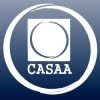





 Store
Store
